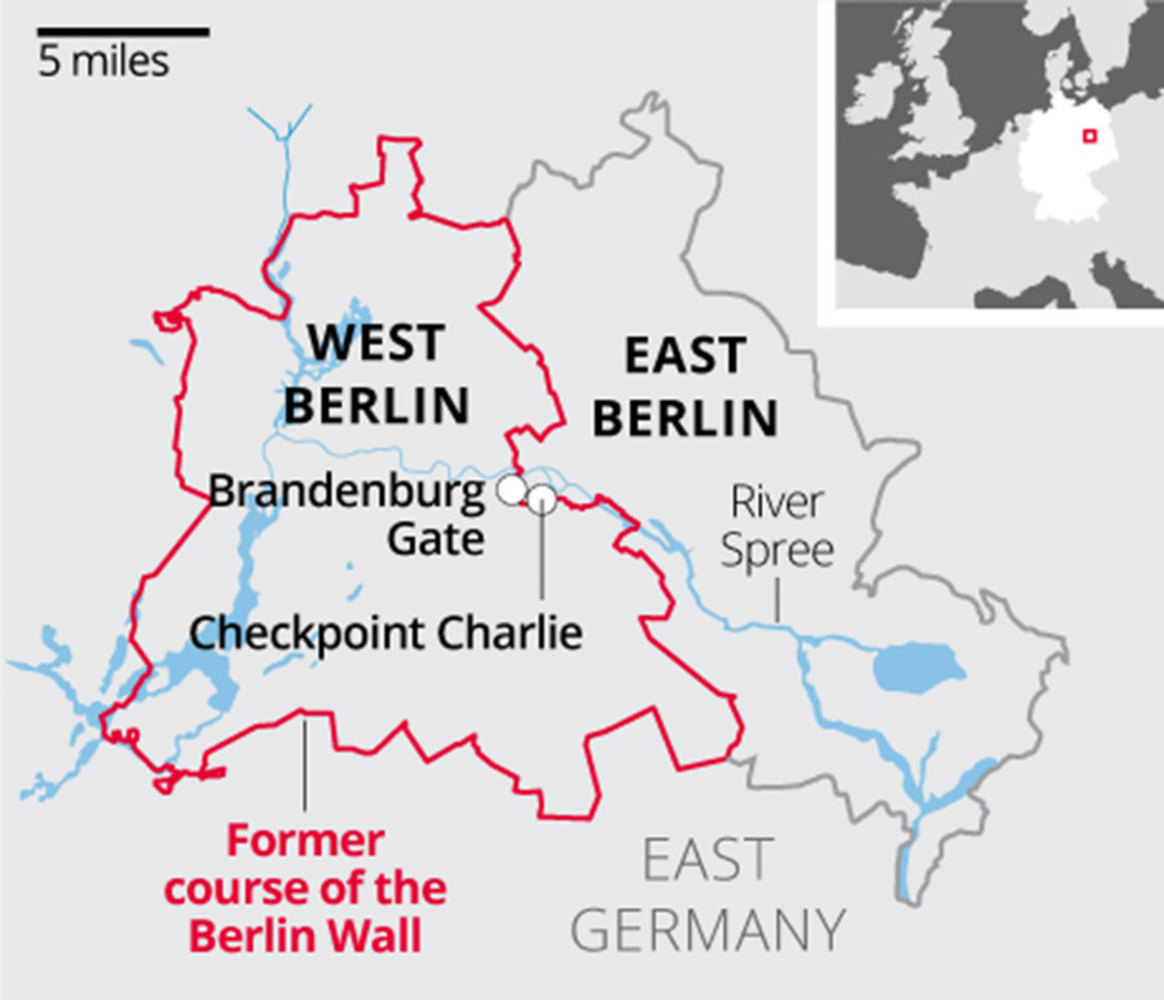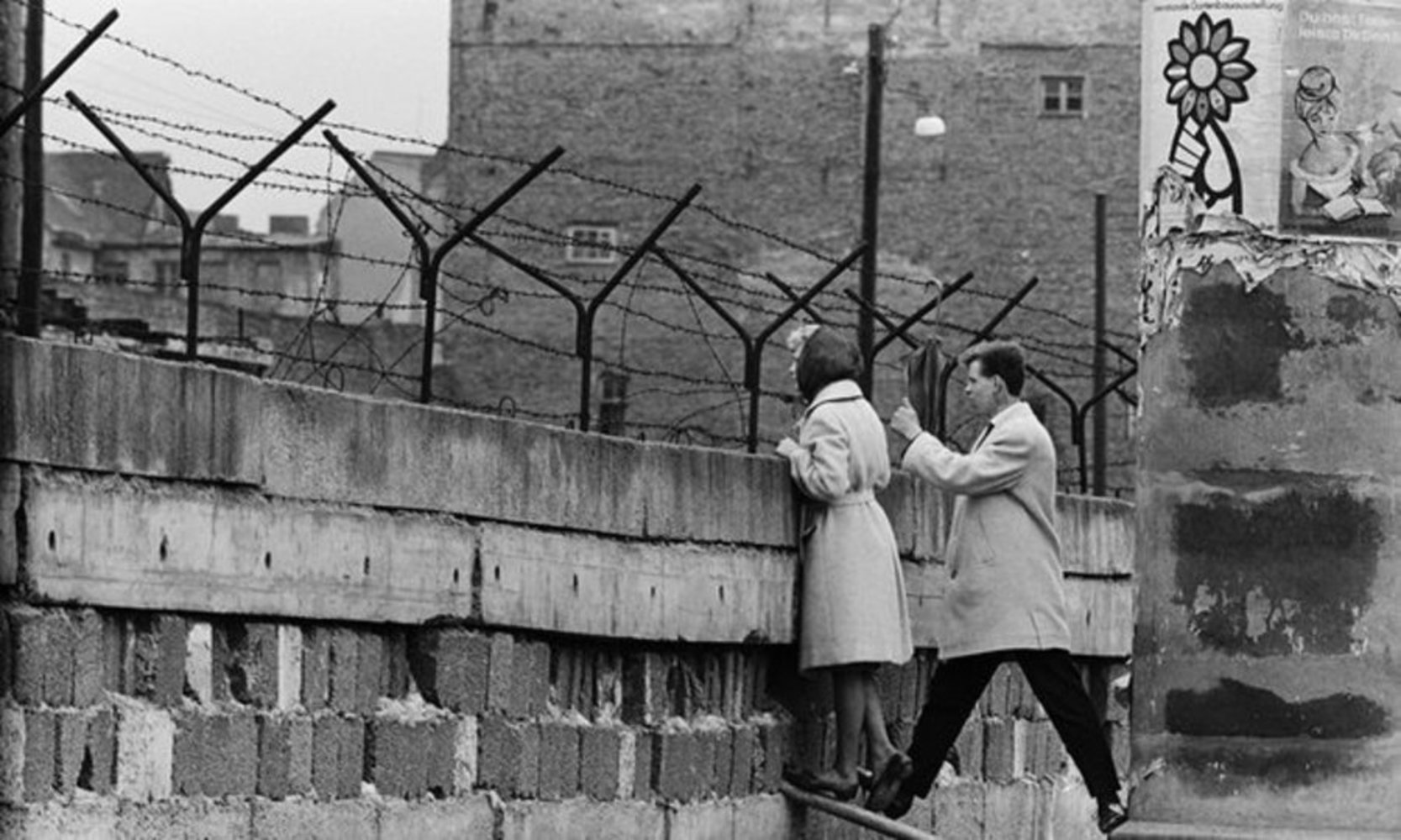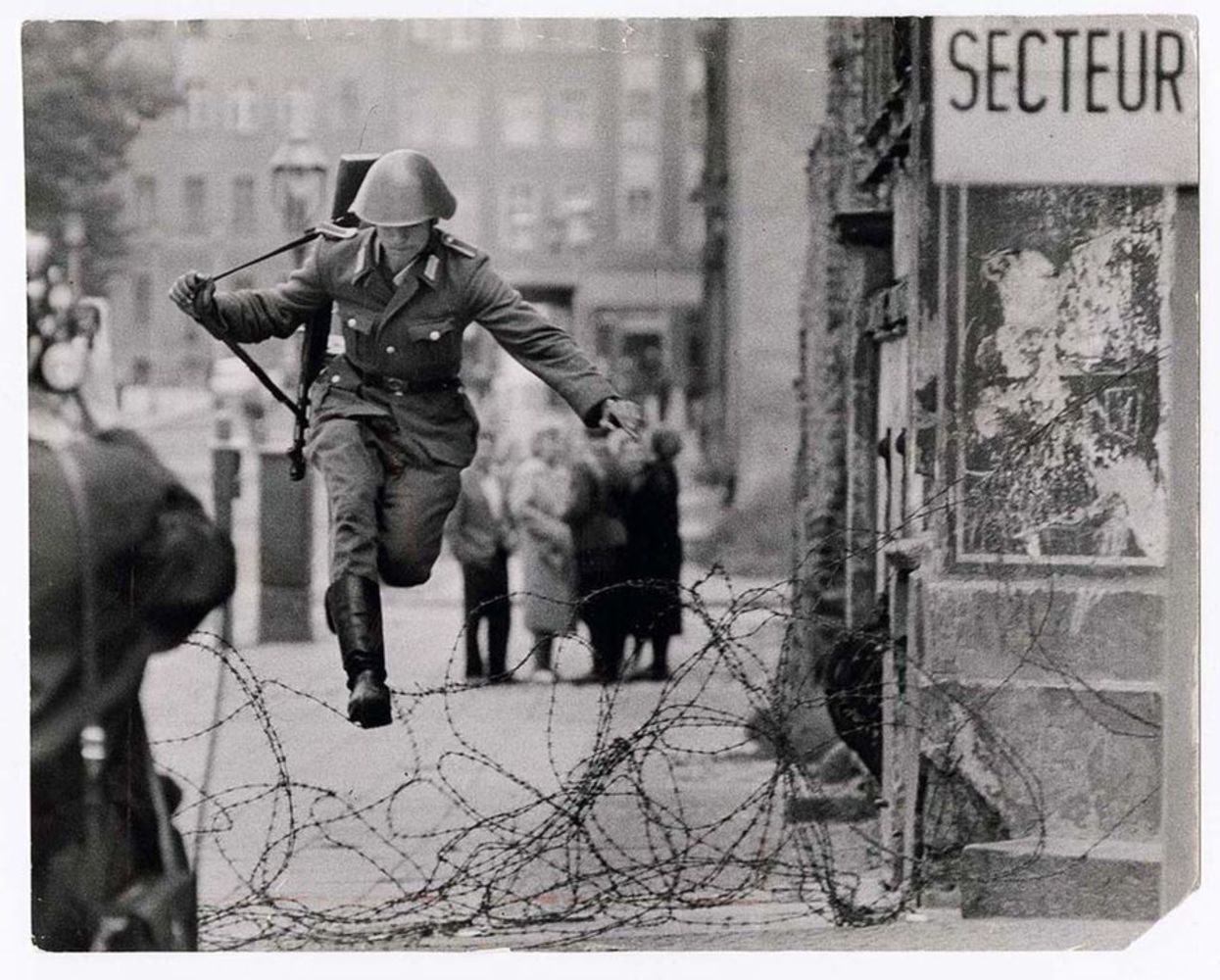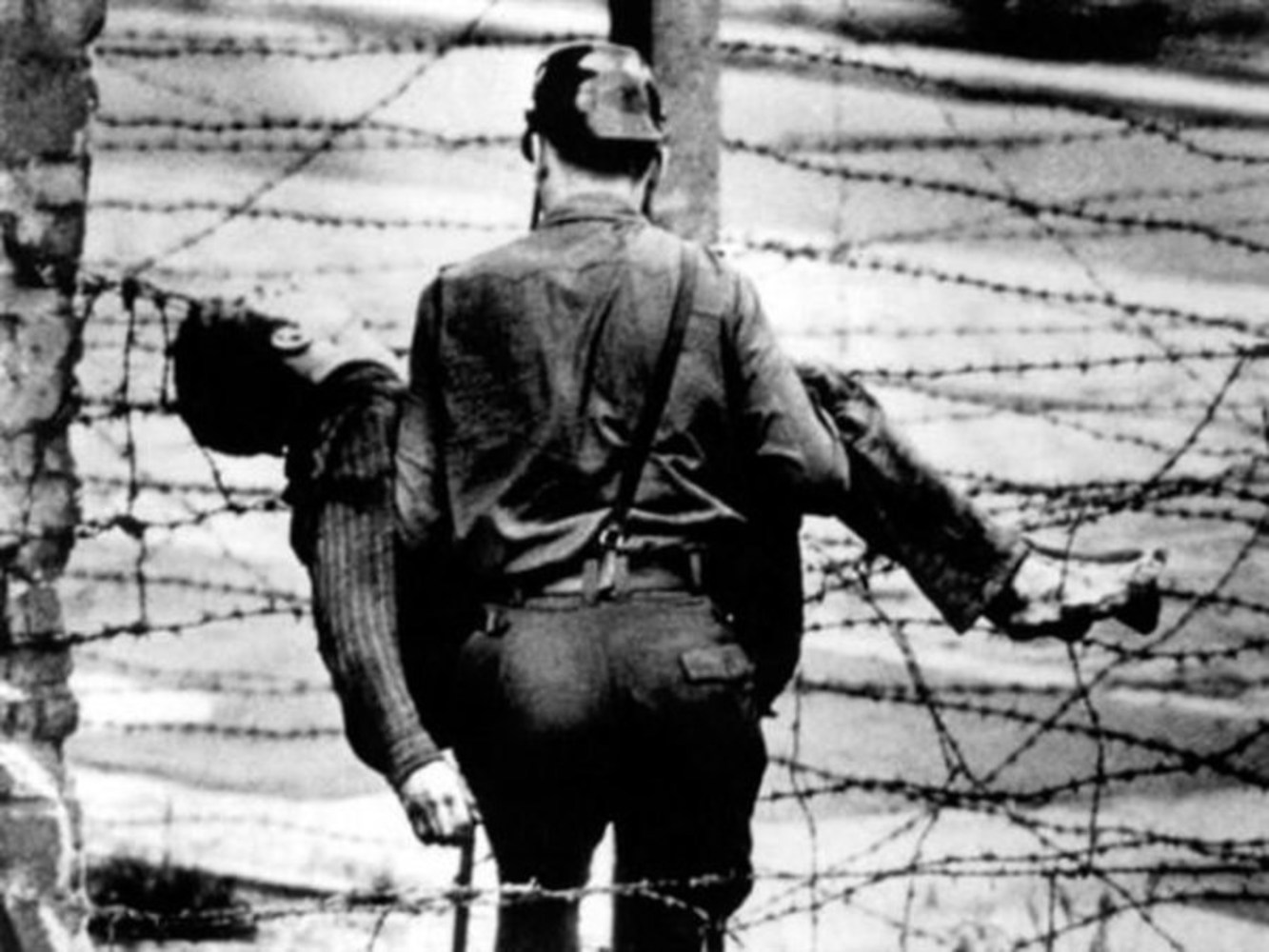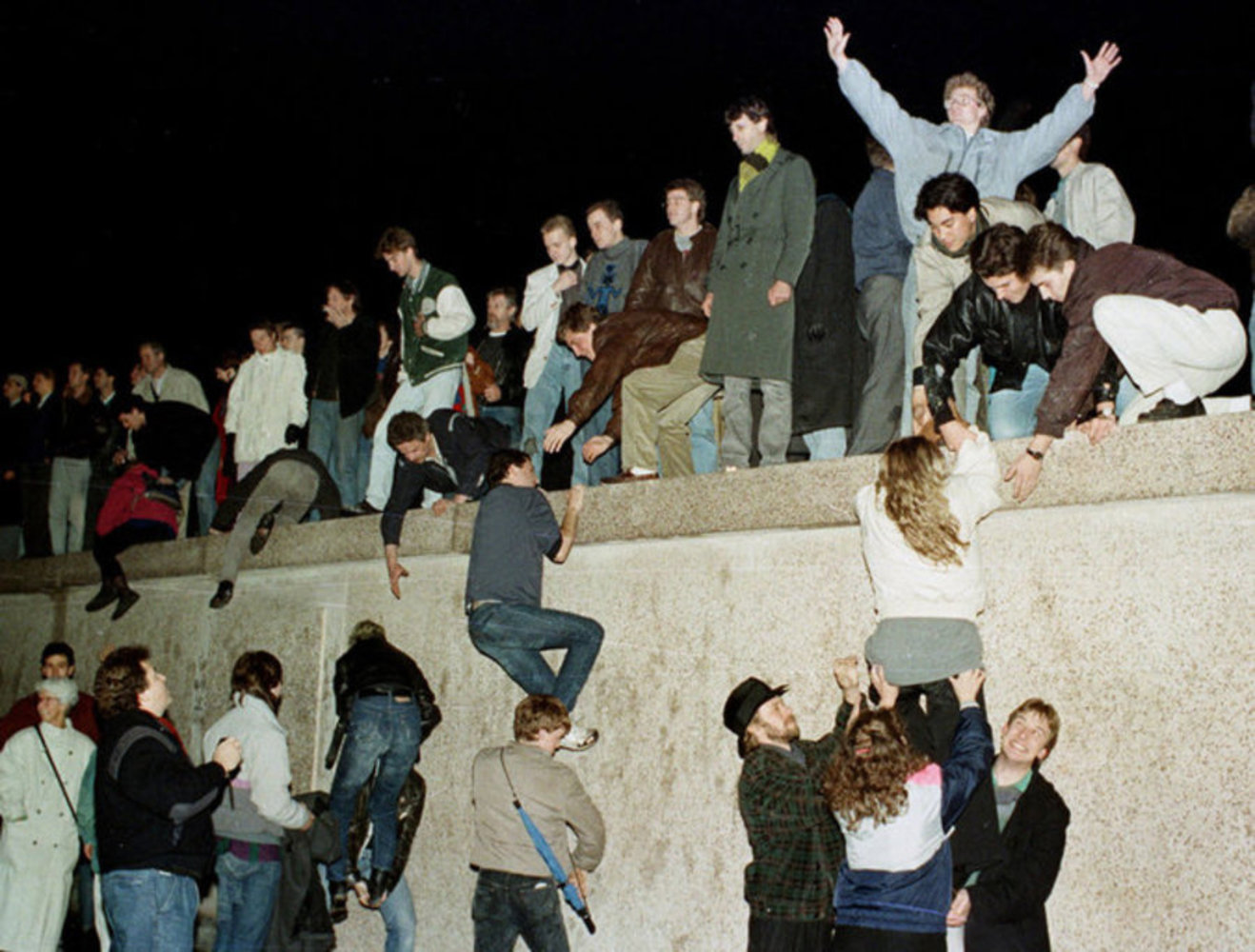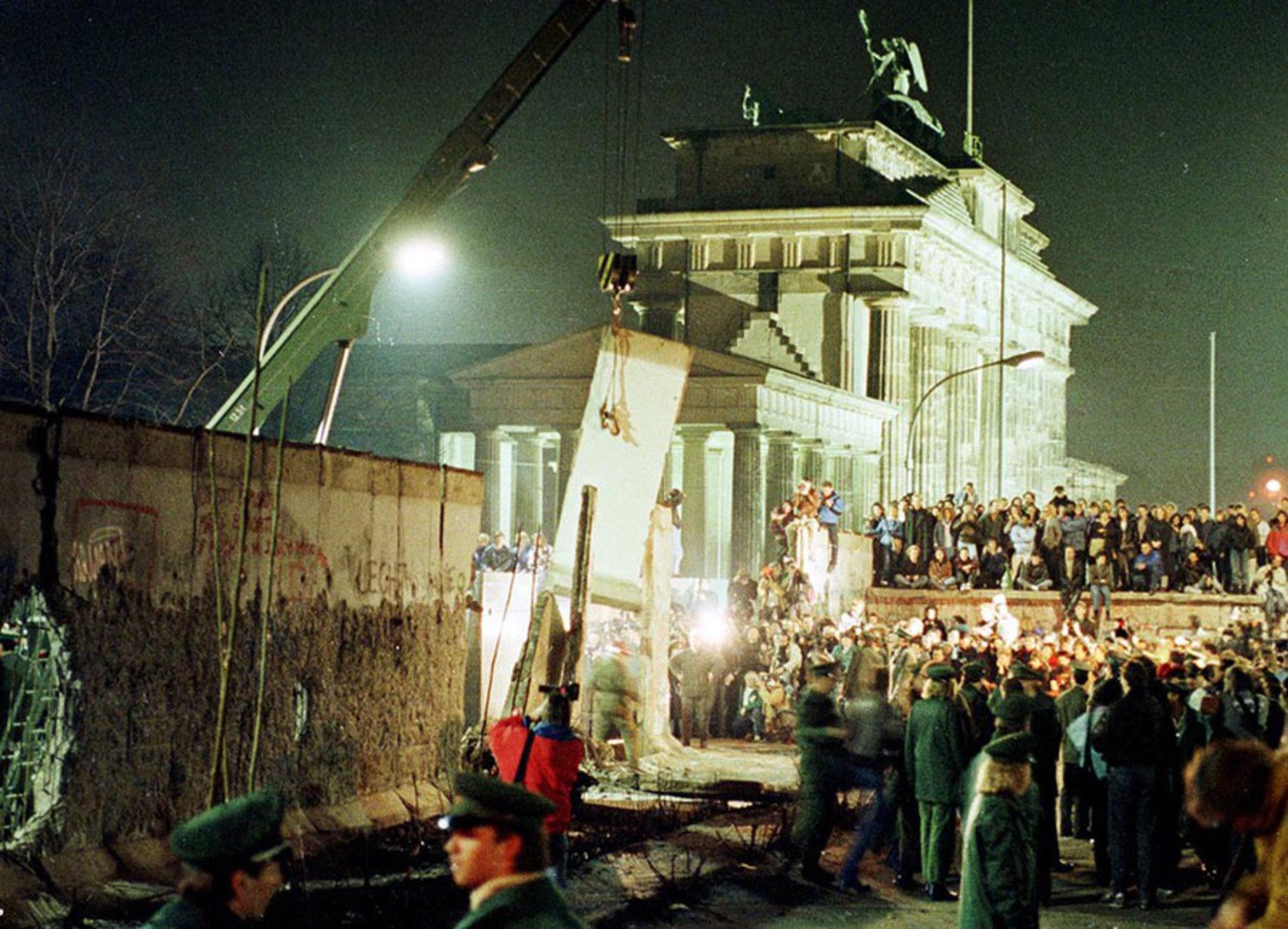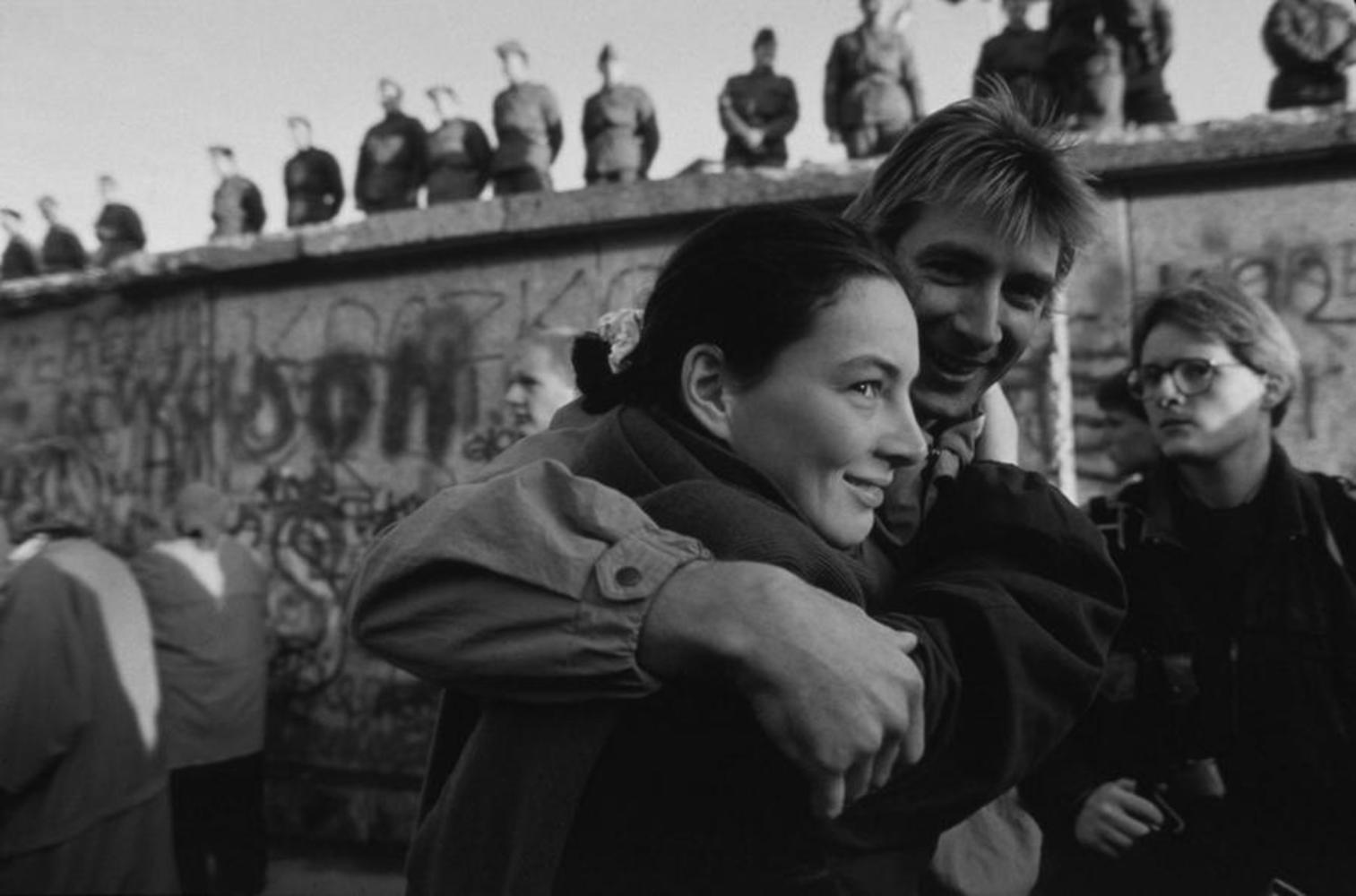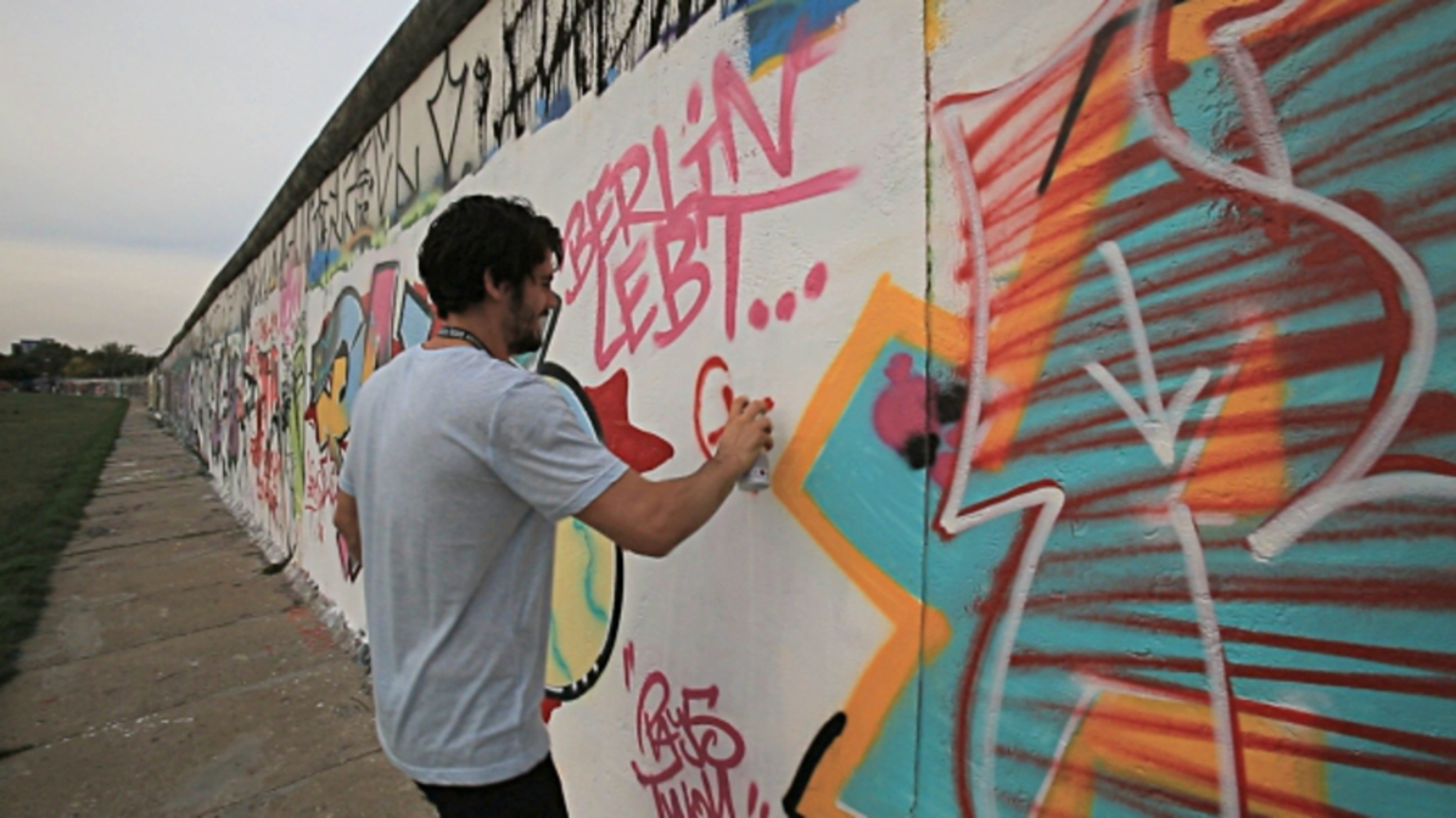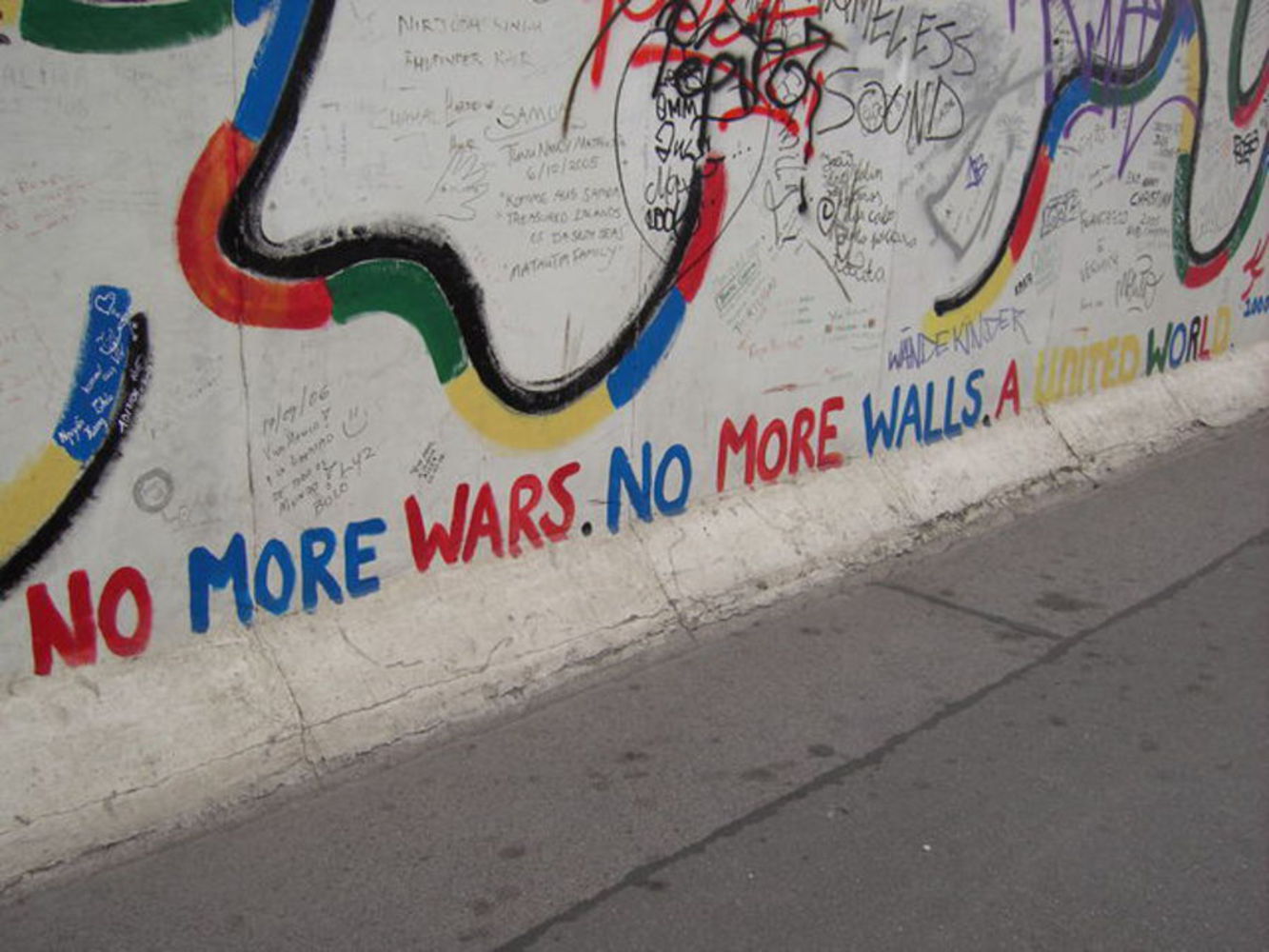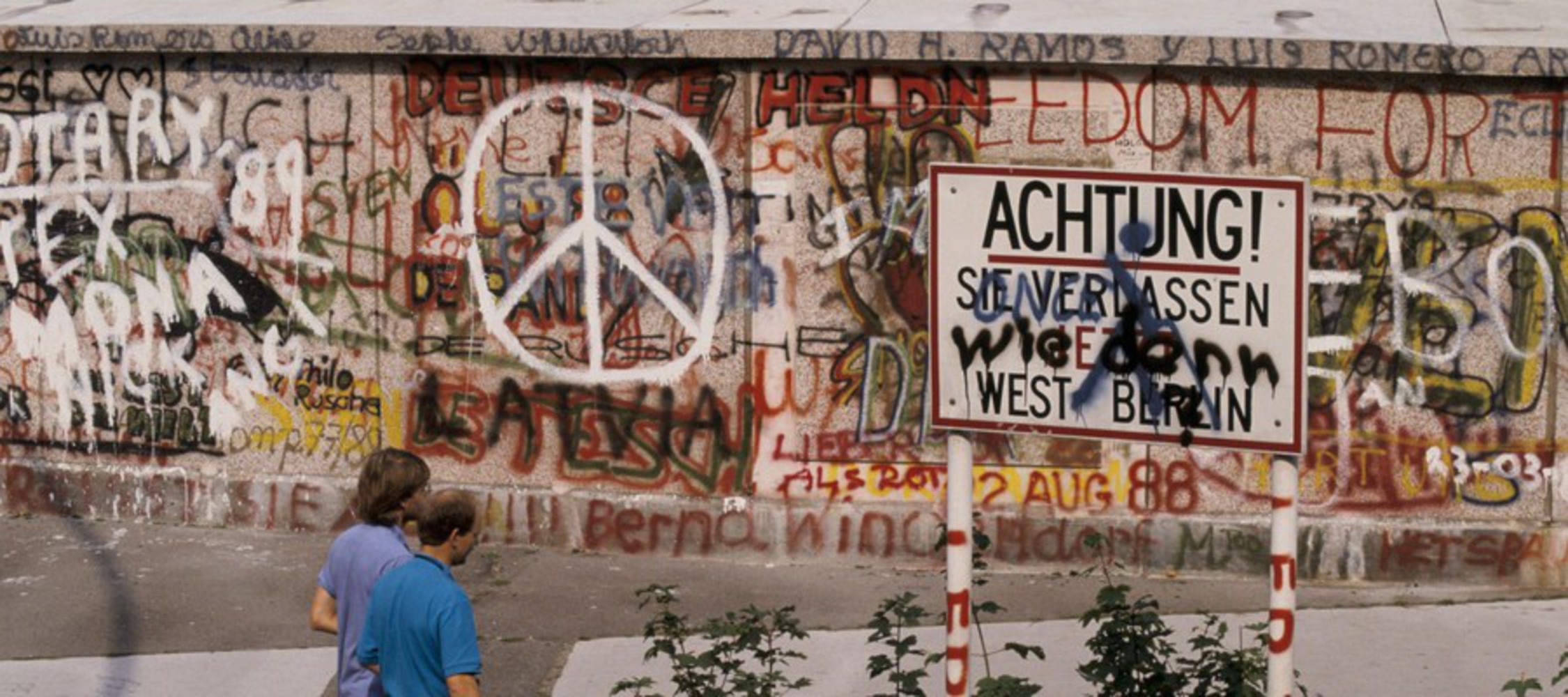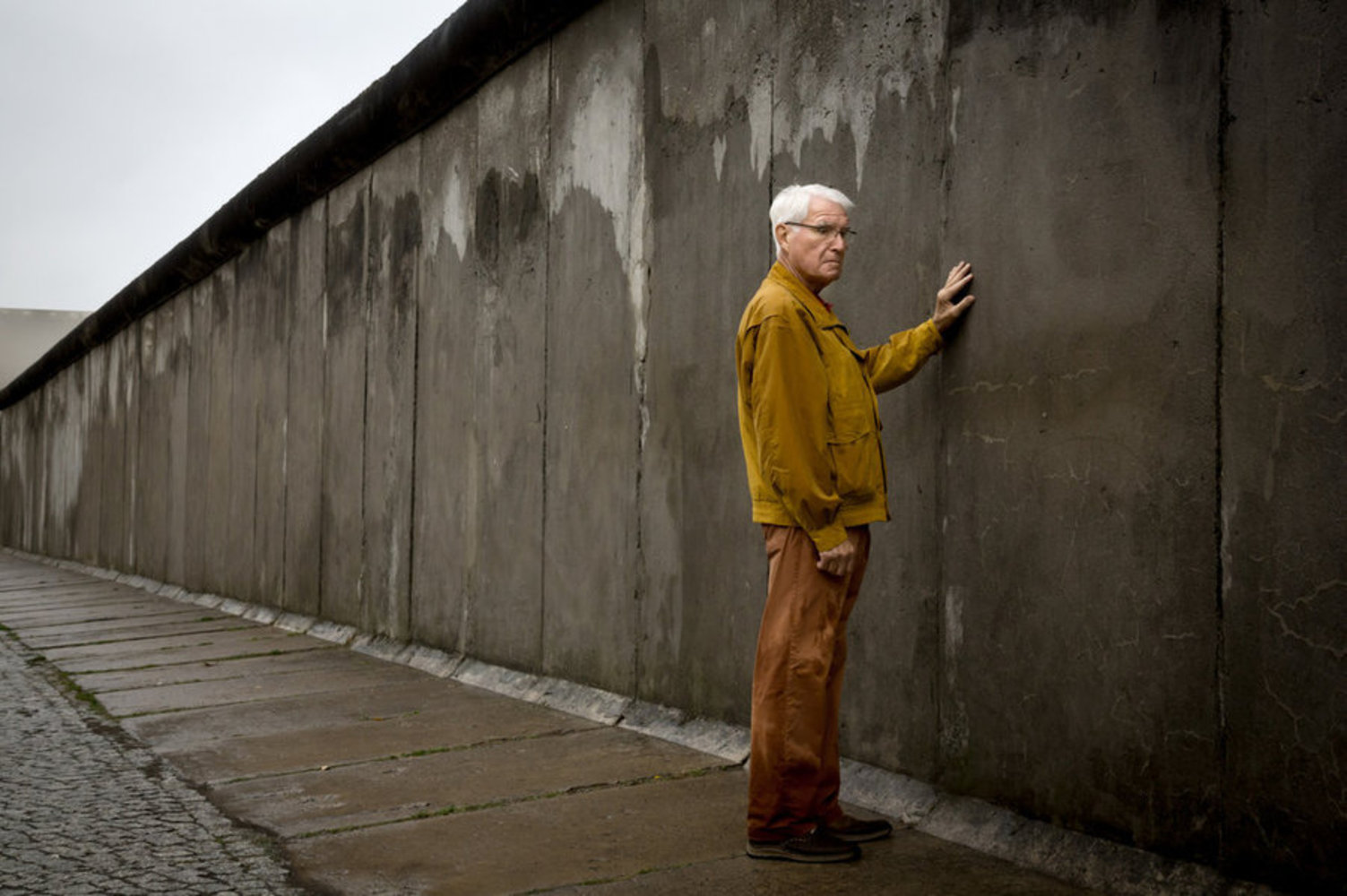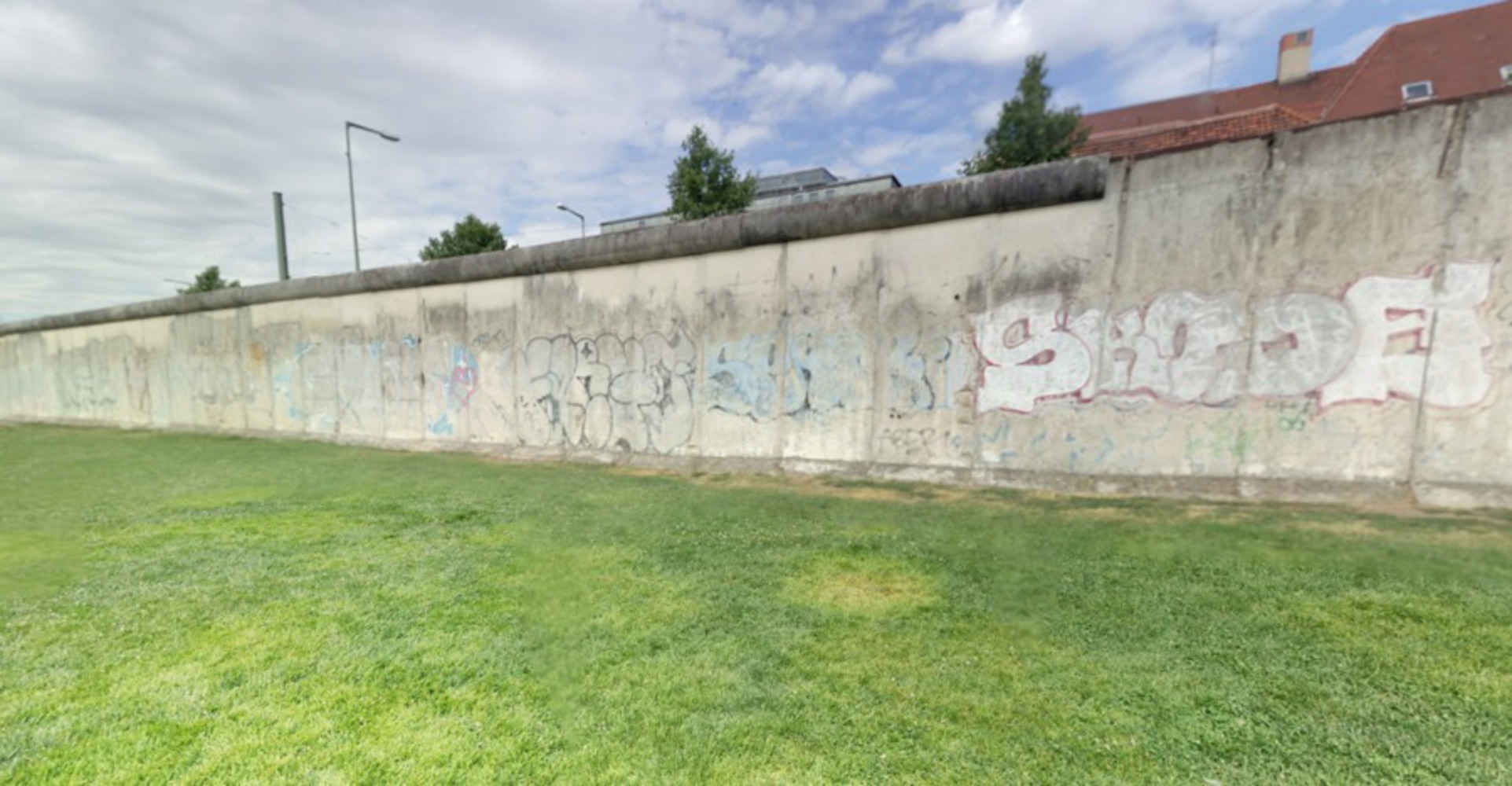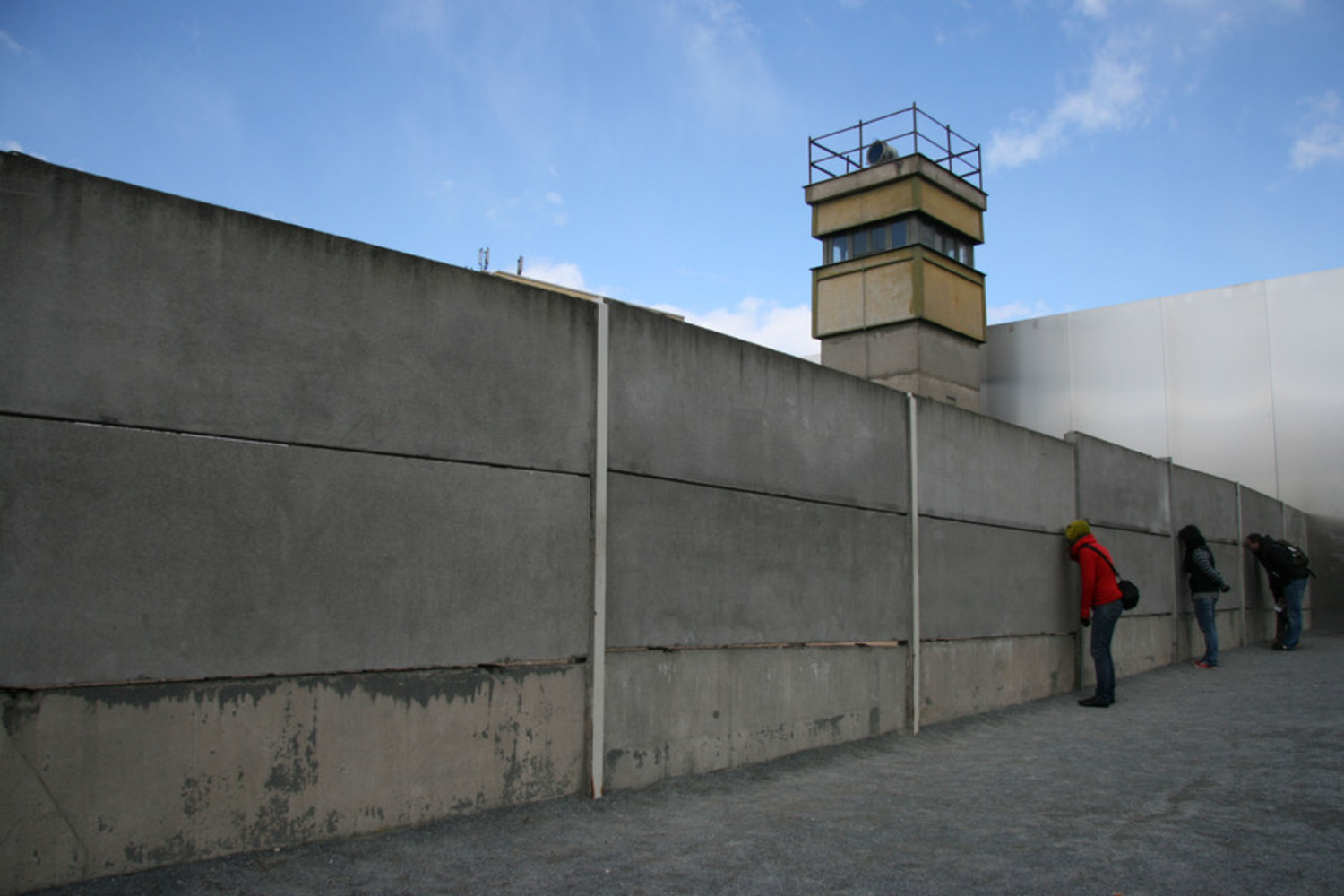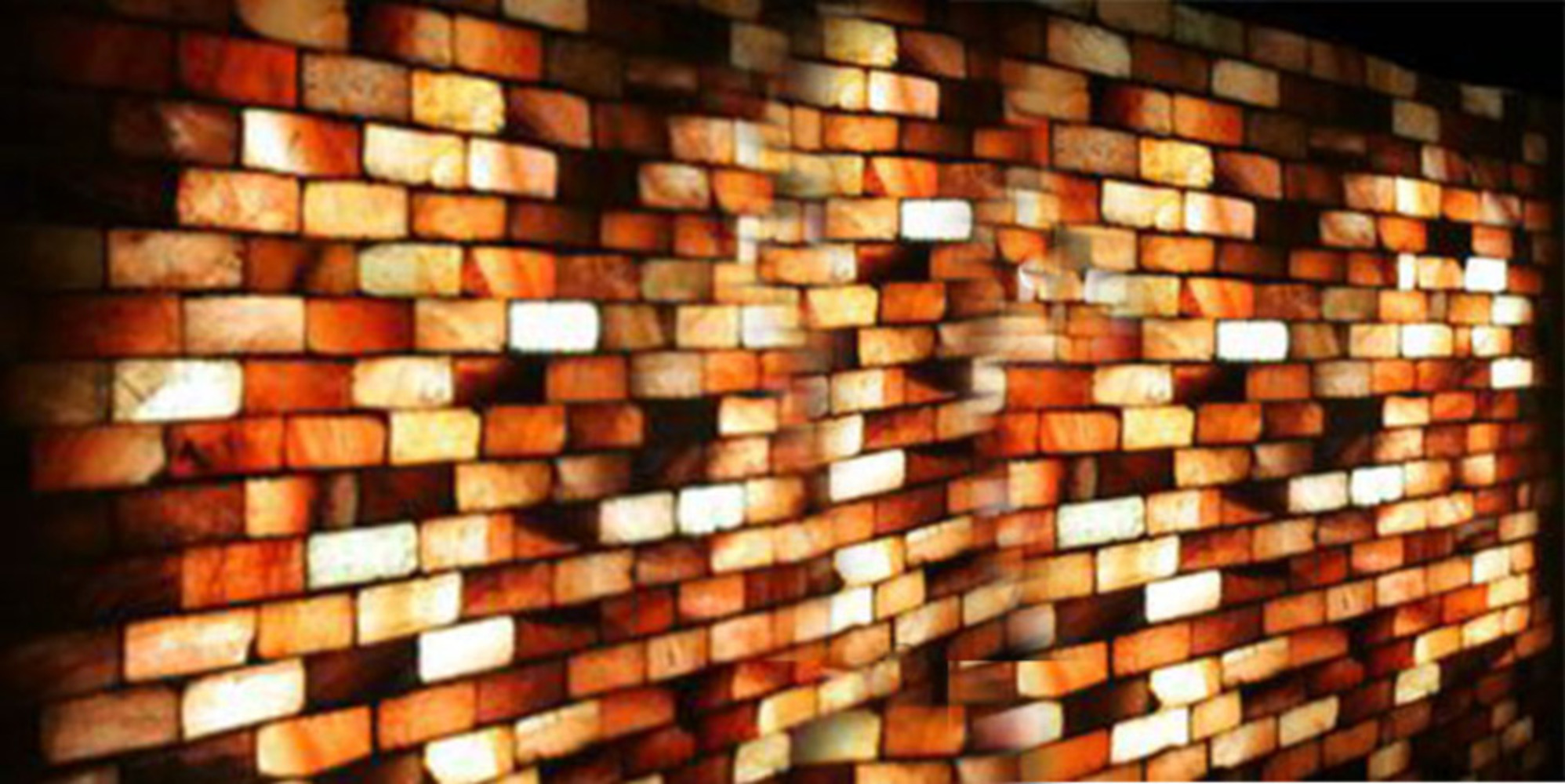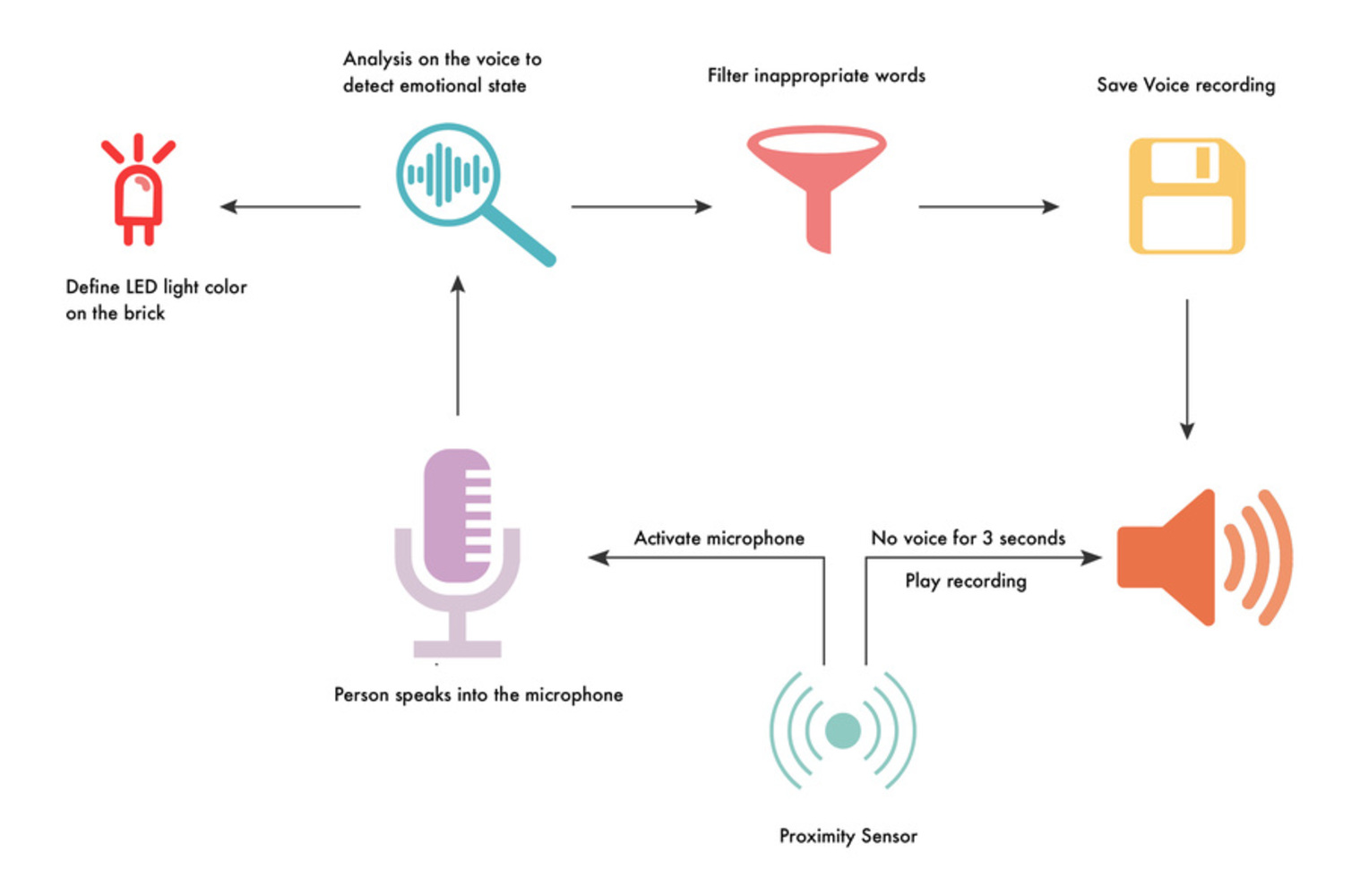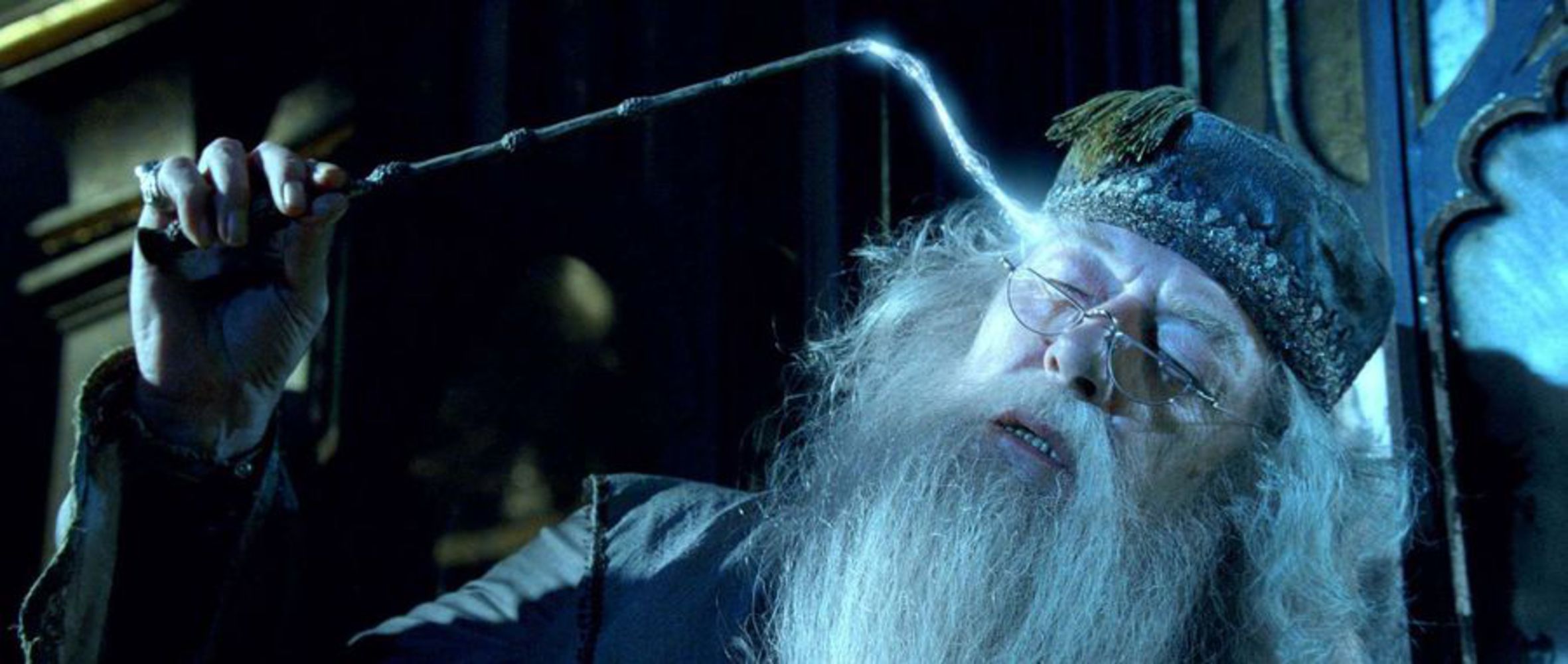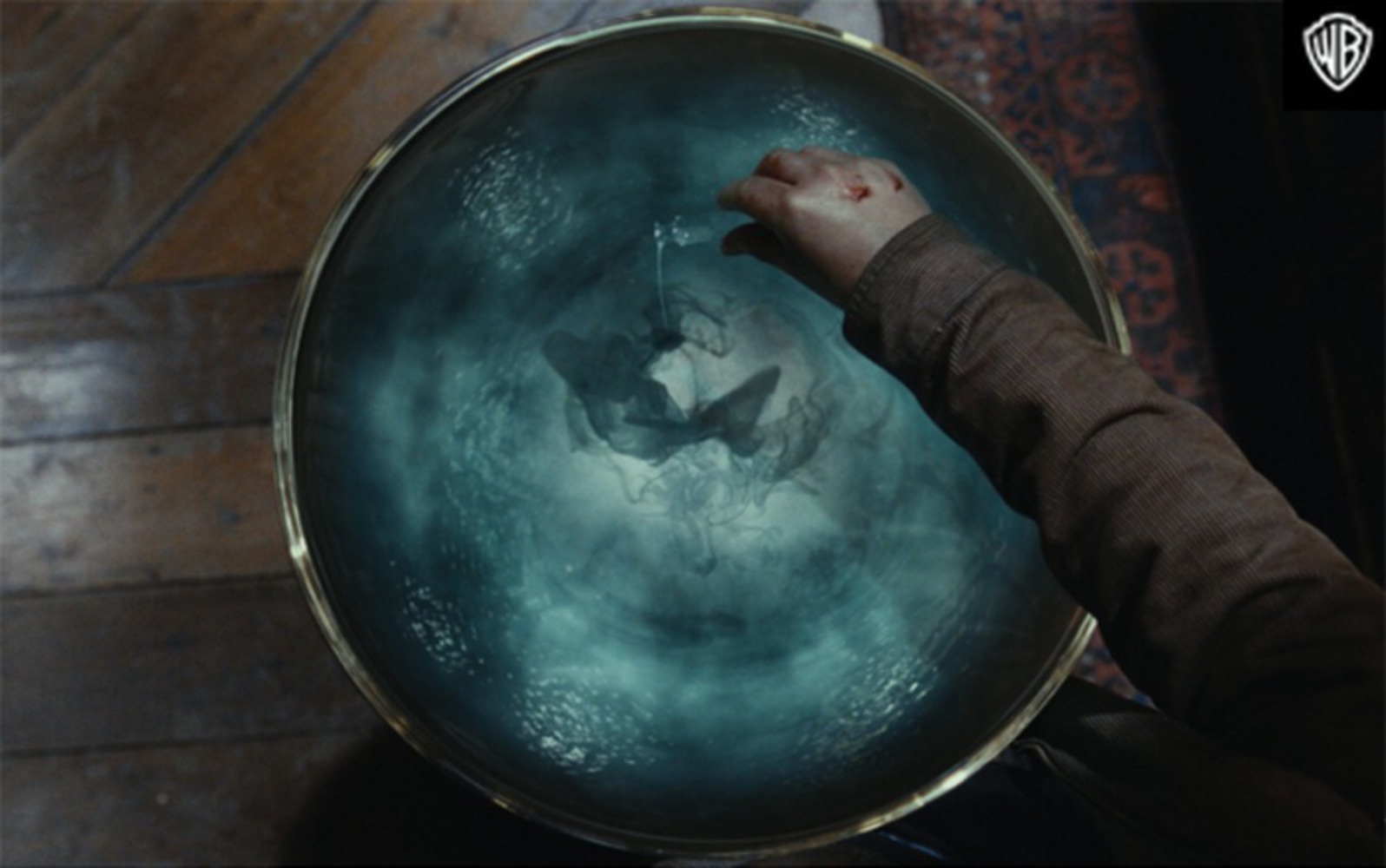There are different ways in which this installation could be realized:
1. The wall could be embedded with "smart bricks" having microphone and speaker which could be turned on based on proximity sensors. The person would have to lean close to the wall, with either mouth or ear cupped against the wall depending on whether the person wants to speak or listen. The microphone would be turned on at first to see if the person wants to speak. If there is no voice speaking into the microphone for a defined interval say 3-4 seconds(there will definitely be some noise at all times so the threshold of the microphone for starting recording would have to be defined), and the proximity sensor is still activated, an intention of listening to a story is detected, the speaker will be activated and the latest story that had been embedded in that brick would be heard by the person.
Sentiment analysis could be done on the words spoken by a person. The more painful the story is, the warmer could be the glow of the brick. If the story is positive, a cooler shade of color could be used. Also, an algorithm needs to be used to filter out inappropriate words/stories.
2. Another way of implementing this installation is to have the people call and relay their stories over the phone. This reaches out to a broader audience as people can sit in their homes and talk about their experiences, especially for the older audience who might find it cumbersome or even impossible to actually walk up to the installation and tell their stories. However, the very act of walking up to the wall and speaking into it enhances the entire experience altogether.
3. Twitter and other social media could also be used where people could send across their voice recordings with appropriate hashtags. This would help reach out to a very broad community because to the power of social networking.

